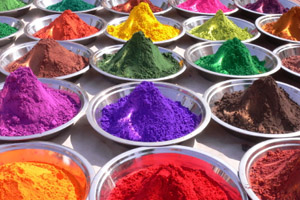Colour vision deficiency
Hello…
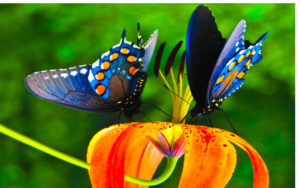
What do you feel when you see this??
Beautiful! Amazing! colourful! But many on this earth couldn’t enjoy this beauty. There are approx 1 in 12 men (8%) and 1 in 200 women have Colour vision deficiency in the world.
And many of them were still undiagnosed.
Colour Vision is an awesome gift given by God. The Color is a phenomenon of light or visual perception which enables us to differentiate between different things. The cells which help in perceiving colour are called cone cells. They are of three types Red, Green and blue cones. Any defect or malfunctioning of these cells results in Color vision deficiency. Colour vision deficiency is classified into different types based on the type of defect and the type of cell affected.
Colour Vision deficiency classification:
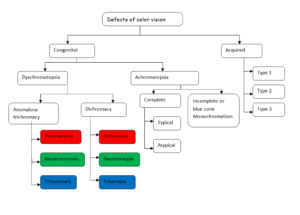
Congenital Color Vision defect:
- Inherited genetically, without associated abnormalities, non-pathological and incurable
Dyschromatopsia:
- Either one type of the cones is altered in spectral sensitivity or it is absent or non-functional.
Anomalous trichromacy:
- One of the cone pigments is altered in spectral sensitivity.
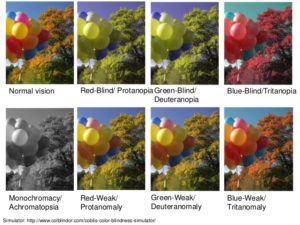
Protanomaly:
- Photopic vision for red wavelength is low.
Deuteranomoly:
- Photopic vision for green wavelength is low.
Tritanomaly:
- Photopic vision for blue wavelength is low.
Dichromacy:
- One of the cone pigments is absent or non-functioning.

Protanopia:
- Complete absence or non-functioning of red retinal photoreceptors
Deuteranopia:
- Complete absence or non-functioning of green retinal photoreceptors.
Tritanopia:
- Complete absence or non-functioning of blue retinal photoreceptors.
Achromatopsia or monochromacy or Total colour blindness:
- Two or three cone pigments are missing.
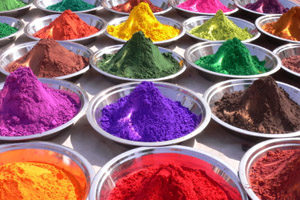

Complete Achromatopsia:
- Absence of more than one cone or all cones
Typical Achromatopsia or Rod Monochromacy:
- The total absence of cones in the eye.
Atypical Achromatopsia or Cone Monochromacy:
- Lack or damage of more than one cone
- People with both Protanopia and Tritanopia(only green cones are present)
Incomplete Achromatopsia or Blue cone Monochromatism:
- Only blue cones and rods are functioning.
Acquired colour defects:
- Type 1 red green-Similar to protan deficiency – displaced relative luminous efficiency to short wavelengths, associated with Progressive cone dystrophies, Retinal pigment epithelium dystrophies
- Type 2 red green-Similar to deutan deficiency but with a greater reduction in short-wavelength sensitivity, associated with optic neuritis
- Type 3 -Similar to Tritan deficiency but with displaced relative luminous efficiency to short wavelengths, associated with central serous chorioretinopathy, Age-related macular degeneration, Rod and rod-cone dystrophies, Retinal vascular disorders, Peripheral retinal lesions, Glaucoma and Autosomal dominant optic atrophy
Softwares for Color Vision deficiency:
Visolve
Visolve by Ryobi Systems Solutions is a software that uses filters to allow better differentiation between colours by making colours lighter and darker or increasing the saturation.
Daltap
Daltap is assistive software by Glenn Heylen that comes with many useful features. Its naming feature gives the name of the colour at the tip of the cursor while also enabling the user to enlarge or zoom in the area around the mouse.
ColorBlindExt
ColorBlindExt is a Firefox add-on that helps colour blind people while browsing the web, by processing images and text on the page according to the type of colour blindness the user suffers from.
eyePilot
EyePilot is software that comes with several different types of filters. Along with the usual flashing and name filters that flash a selected colour and show the name of the colour that the mouse points at respectively, eyePilot has a grey filter.
WhatColor
WhatColor is a freeware that enables users to identify colours by selecting pixels. The program magnifies an area around the cursor from which the user can select some pixels to identify. The program will then tell the user the colour of the selected pixel is, along with providing an RGB value for it.
Setting colour correction for your mobiles:
https://www.youtube.com/watch?v=6b2hckCKmaU
References:
